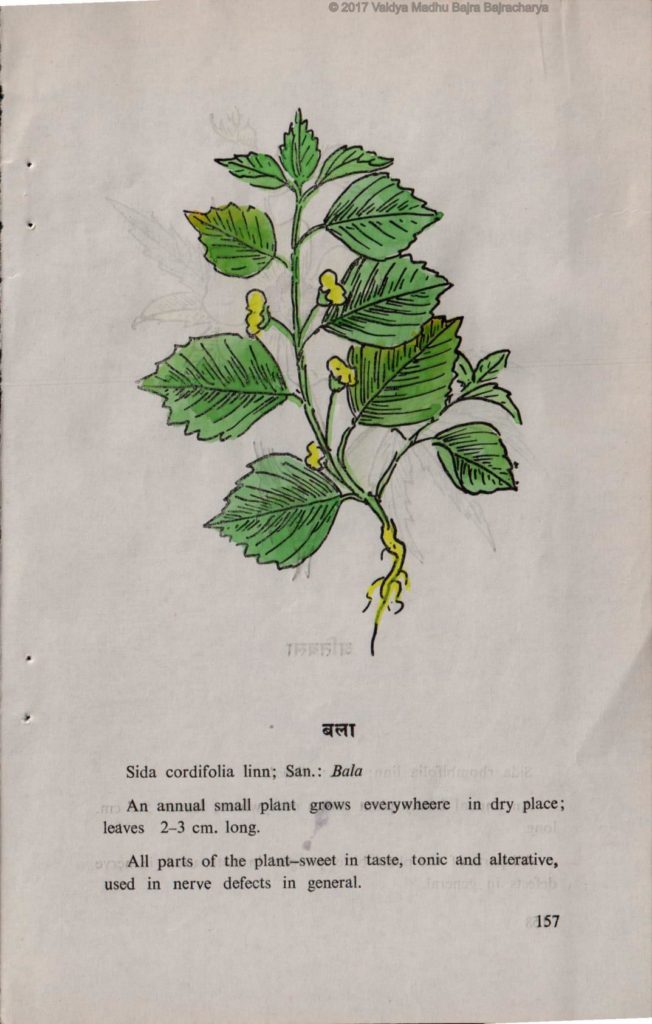Latin: Sida cordifolia
Sanskrit: Bala
English: Country Mallow
WHAT IT DOES: Bala is sweet in taste and hot in action. It nourishes and strengthens immunity, heals the nerves, reduces pain and stimulates formation of healthy new tissue.
RATING: Silver, due to minor limitations in usage
SAFETY ISSUES: Contains small amounts of ephedrine alkaloids. The amount of total alkaloids in bala plant by average dry weight is 1/15th of that found in ephedra. Bala seeds, usually not commercially available, contain about four times as much of the alkaloids, about 1/4 of that found in ephedra, and so should not be used unless under the care of a professional health care provider (reported in Kapoor, 1990; reported in Huang, 1999).
STARTING DOSAGE:
• Dried powder: two grams two times per day
• 4:1 concentrated powder extract: one gram two times per day

Bala is used as a tonic and to activate the function of the nervous system (Vata) by increasing blood circulation. As a tonic, it increases the vital properties of the serum (plasma), which is very important for the nourishment of the cells, the strength of thehealing power and the maintenance of immunity. Following this effect, it has medicinal value in treating neuropathy related to any organ including the heart, brain, spinal cord, facial nerves and inner ear. There is a gradual tissue-strengthening effect, most noticeable with increased wound healing after injury. It is used to stimulate healing of dry painful joints in osteoarthritis. TAM doctors also use it to heal the lung in tuberculosis, as well as for chronic bronchitis and chronic hemoptysis (spitting of blood).
The low level of ephedrine in bala does not warrant its substitution for ephedra in over-the-counter weight loss formulas, now banned in the United States and elsewhere. It is possible that unscrupulous manufacturers may attempt to hide the presence of ephedra alkaloids by adding bala to their weight-loss products. Bad idea.
TAM doctors use bala root to make various complex oil preparations. These oils are used as external applications for various nervous sytem diseases, such neuropathies, facial paralysis, spasmodic coughing or asthma, vertigo, seizures, and menstrual cramps. The oils are also used for rheumatic and arthritis pain. Bala root is a major ingredient is the famous medicinal oil called narayana taila.
Research highlights:
• Though a major Ayurvedic herb, there is still little scientific research available on bala. Test tube research has confirmed the presence of analgesic and antiinflammatory activities in the aerial portions and roots (Kanth and Diwan, 1999).
• Pharmacological studies have shown the presence of mucins, fatty oils and resins, as well as plant sterols, which may partially account for the tonic actions of the herb (reported in Kapoor, 1990).
